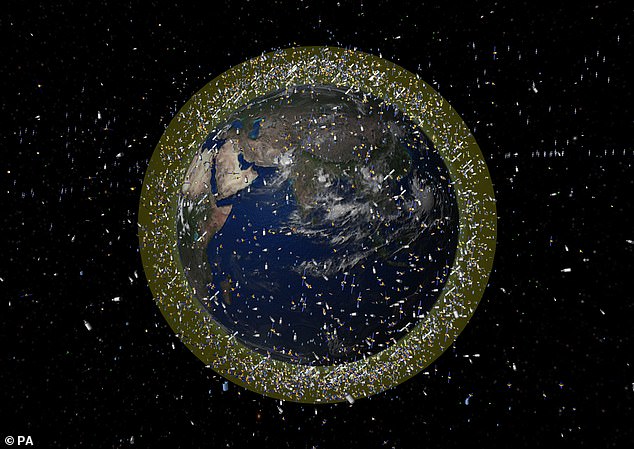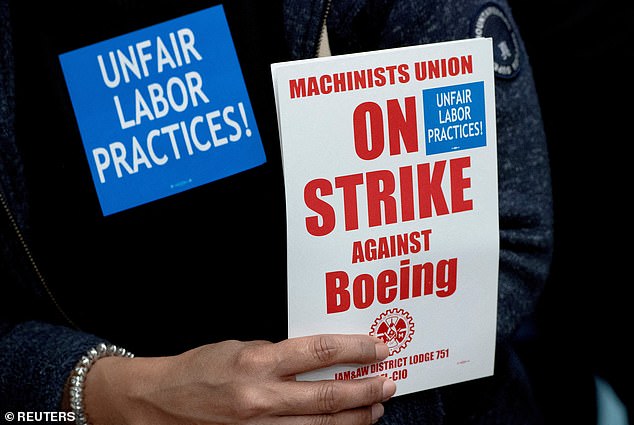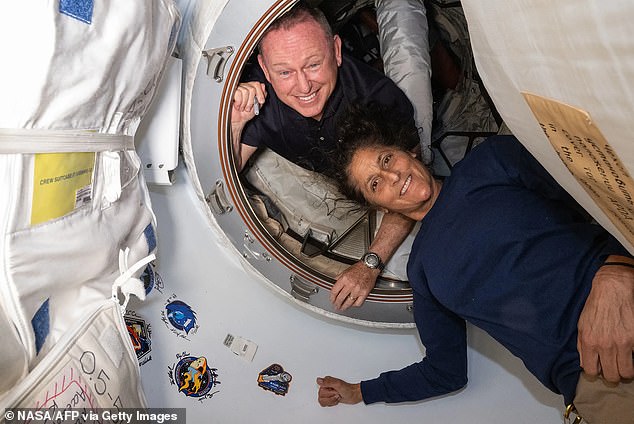World hit by internet outages after ANOTHER Boeing outage
A Boeing satellite suffered an ‘anomaly’ that caused it to spontaneously explode in orbit, resulting in global internet and communications disruptions.
In yet another blow to the aerospace company, the nearly 15,000-pound satellite – iS-33e – shattered into more than 50 pieces on Monday.
The orbiter was operated by international satellite services provider Intelsat, which provides communications services to a variety of customers in nearly 150 countries.
Intelsat confirmed the “total loss” of the satellite, which resulted in a “loss of power and service” for customers in Europe, Africa and parts of the Asia-Pacific region.
This latest blunder by Boeing comes as the company reports it lost $6 billion in the third quarter, bringing total losses for the current year to nearly $8 billion.
It follows a year of scandals, including a failed space mission that left two astronauts stranded on the ISS, and a crippling workers’ strike.
And in July, Boeing also pleaded guilty to a criminal fraud conspiracy charge and was fined $243.6 million after violating a 2021 deferred prosecution agreement.
A Boeing communications satellite has shattered in orbit, dealing another blow to the aerospace company’s tarnished reputation (artist’s illustration)
The exact cause of the satellite’s demise has not been revealed.
But Intelsat stated that an “anomaly” that occurred on October 19 caused the iS-33e to spontaneously disintegrate.
The U.S. Space Force is currently tracking about two dozen pieces of debris linked to the incident.
This will add to the growing cloud of space debris surrounding our planet, increasing the risk of debris falling back to Earth.
iS-33e was a geostationary communications satellite used for telephone, Internet and mobile communications and for broadcasting television and radio signals.
Intelsat has said it is in the process of moving service from iS-33e to other satellites, and that a ‘Failure Review Board’ has met to conduct an analysis of the cause of the satellite’s explosion.
In the past, satellites such as iS-33e have disintegrated due to collisions with space debris or meteoroids and increased solar activity. It is possible that one of these two led to the satellite’s demise.

The debris from this explosion will add to the growing cloud of space debris surrounding our planet, increasing the risk of the debris falling back to Earth.
But this isn’t the first time iS-33e has encountered problems.
Shortly after launch in August 2016, the satellite suffered a primary thrust failure. A year later, another propulsion problem shortened the estimated 15-year lifespan by 3.5 years.
But iS-33e lasted only eight years and a month before spontaneously disintegrating in low Earth orbit.
The debris from the explosion increases the growing risk of space debris re-entry.
Scientists are currently tracking more than 29,000 pieces of space debris larger than a softball surrounding our planet, but estimate that there could be as many as 100 million untracked pieces larger than a millimeter in Earth’s orbit.
As humans launch more and more objects into space, this rapidly increasing cloud of waste could eventually lead to a scenario known as Kessler Syndrome.
This refers to a hypothetical future in which the density of objects in low Earth orbit becomes so high that collisions between them become extremely frequent, which in turn creates even more space junk and causes the debris cloud to worsen exponentially.

About 33,000 of Boeing’s unionized West Coast workers, most of them in Washington state, have been on strike since September 13.
Kessler syndrome could destroy other functioning satellites, pose serious risks to the ISS and human space missions, and indirectly increase the risk of debris hitting Earth.
We have already seen incidents of space debris re-entering the planet’s atmosphere and making landfall.
In March, a two-pound metal cylinder crashed through the roof of a home in Naples, Florida. NASA later confirmed that it came from a 2.9-ton pallet of used batteries thrown from the International Space Station (ISS) in March 2021.
And in May, pieces of debris as large as the hood of a car and weighing as much as 90 pounds crashed in Haywood County, North Carolina. NASA determined they were remnants of SpaceX Crew Dragon hardware that re-entered the atmosphere.
Although the debris from the iS-33e poses no immediate risk of hitting Earth, it did deal another blow to Boeing’s bruised reputation.
Boeing’s significant financial loss this year is the result of a crippling strike, high legal costs and nightmarish technical accidents.
About 33,000 of Boeing’s unionized West Coast workers, most of them in Washington state, have been on strike since September 13, halting production of the company’s best-selling planes: the 737 MAX and the 767 and 777 widebodies.
The workers are demanding a 40 percent wage increase, spread over four years.

Boeing’s defective Starliner spacecraft left NASA astronauts Barry Wilmore (left) and Sunita Williams (right) stranded on the ISS until February 2025
Last week, Boeing announced it was seeking $35 billion in new financing and would begin laying off 17,000 employees — roughly 10 percent of its workforce — in November.
It has also been a difficult year for Boeing’s space program.
The company’s faulty Starliner spacecraft left two NASA astronauts stranded on the ISS after launch on June 5 and returned to Earth without a crew after helium leaks and thruster failures.
SpaceX has been tapped to return astronauts Sunita Williams and Barry Wilmore to Earth when the Crew-9 mission returns from the ISS no earlier than February 2025.
In the wake of this fiasco, NASA has temporarily halted all Boeing space missions.
“The timing and configuration of Starliner’s next flight will be determined once there is a better understanding of Boeing’s path to system certification,” the agency said.
Regarding the iS-33e incident, Boeing did not immediately comment and instead referred DailyMail.com to Intelsat.
